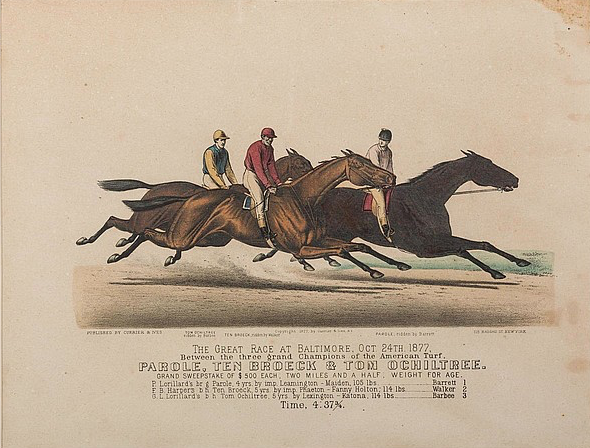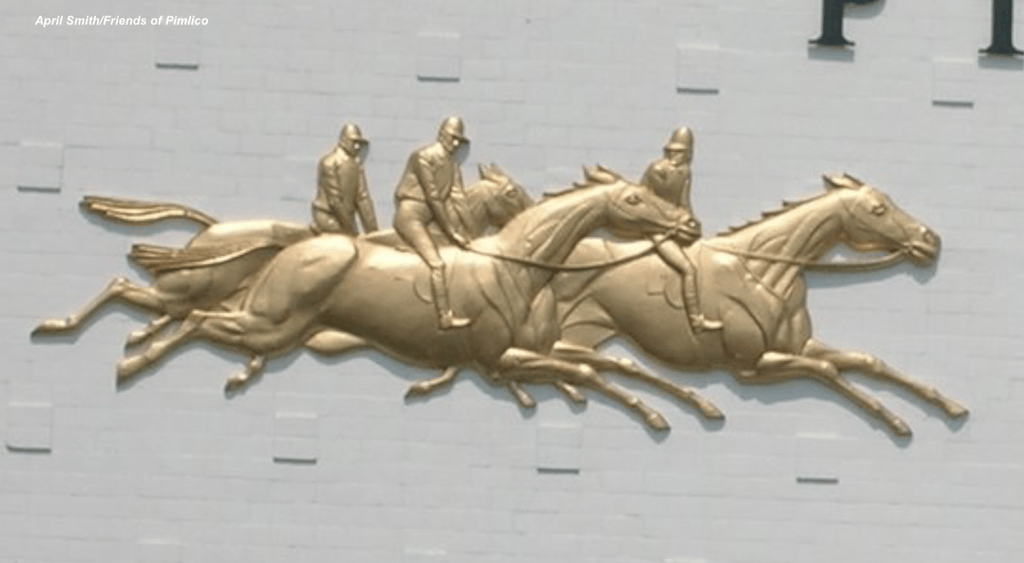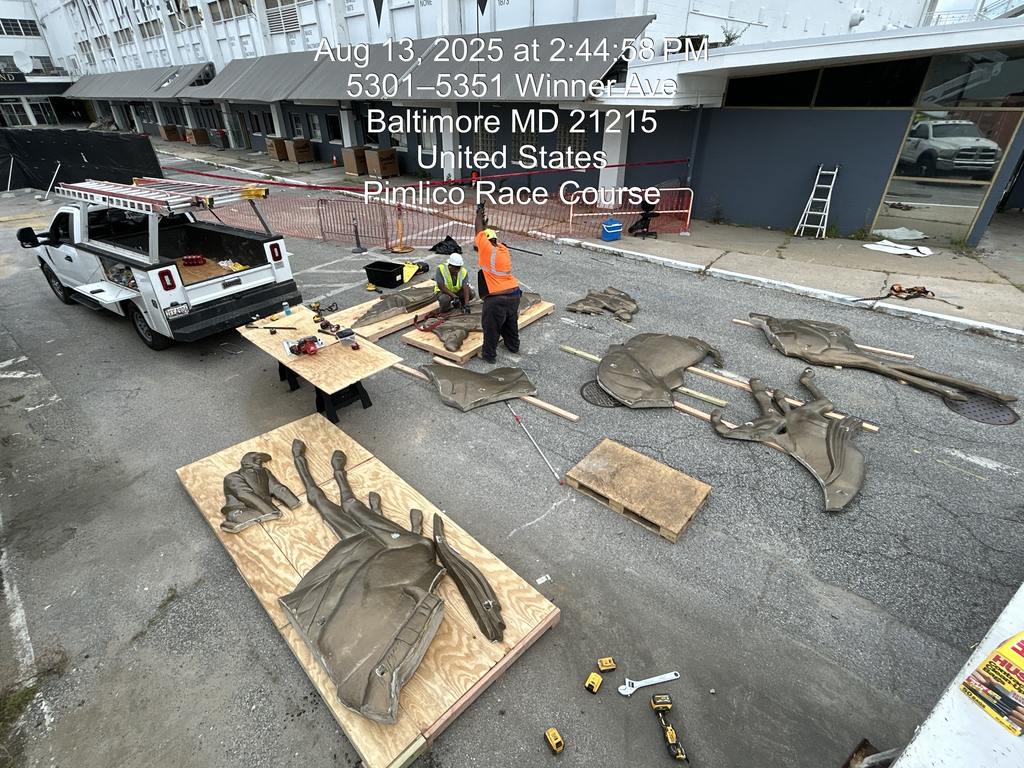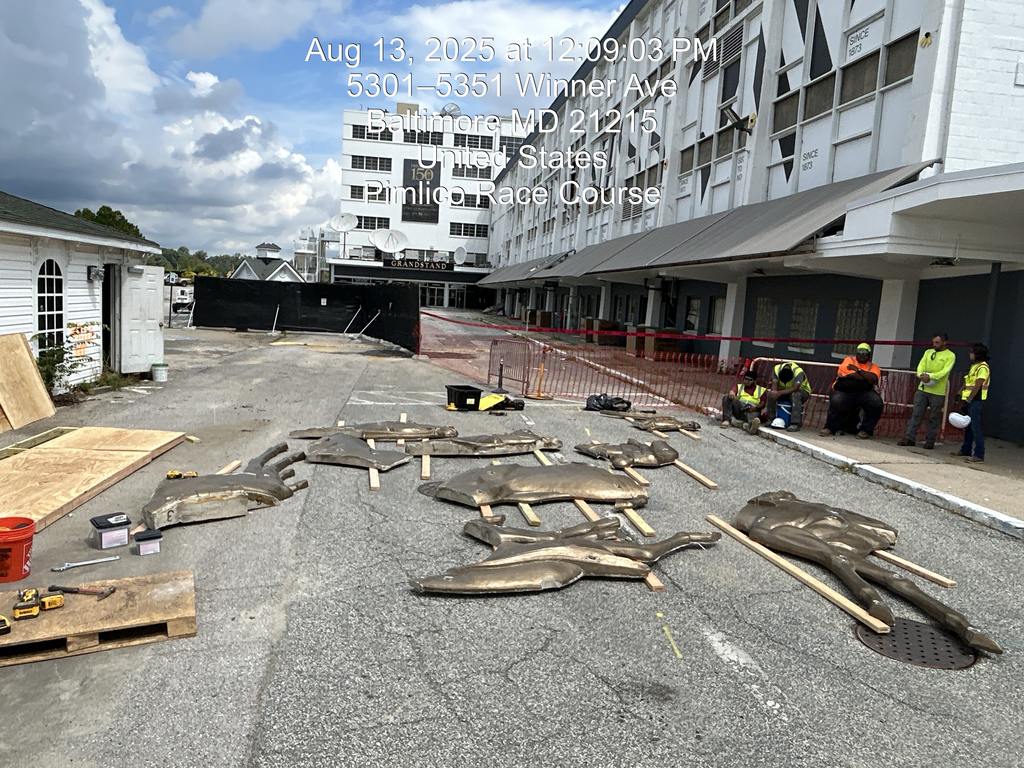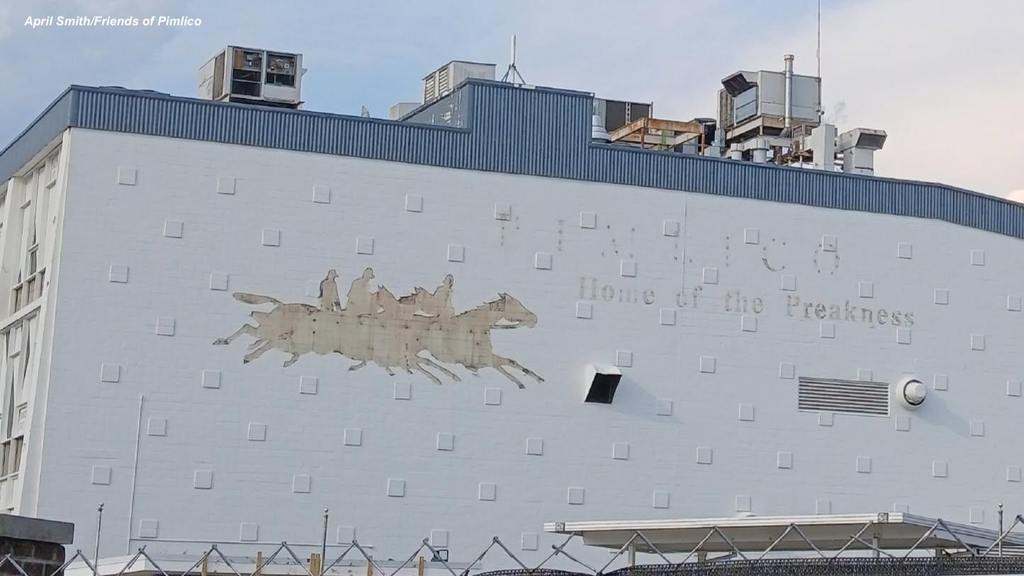
Photo by April Smith/Friends of Pimlico
The large bas relief sculpture affixed to the side of Pimlico Race Course’s clubhouse was removed to make way for demolition of the 1960 Mid-Century Modern building.
By Maribeth Kalinich
On Wednesday, August 13, the last section of the bas relief bolted to the side of the Pimlico clubhouse was removed.
Installed in 1961, the bas relief’s 10 sections were carefully laid out on the parking lot. According to Maryland Stadium Authority representative Al Tyler, the pieces will be crated for conservation, temporarily stored and then reinstalled in the new Pimlico.
Exactly how they will be reused is unclear.
The piece commemorates one of the greatest days in horse racing history and was styled after another work of art honoring that race.
Residing in the Library of Congress, the Currier & Ives color print of the “Great Baltimore Sweepstakes” was used as a template for the bas relief.
The massive sculpture is the creation of renowned artist Bernard A. Zuckerman. After making the model sculpture the piece was scaled and engineered for the large installation.
The complete bas relief weighs 4 tons and measures 30 feet wide x 10 feet high.
The ten sections were cast separately (in we think cement) then each bolted to the wall of the building. Installation artisans filled in seams and holes then covered the entire piece in a coat of plaster before applying an overlay of 24 karat gold leaf. Never to fade, never to tarnish.
The adornment was commissioned by then Pimlico owners, Ben and Herman Cohen, soon after the new clubhouse was complete.
The cost and exact materials used in the casting are unknown.
The “Great Baltimore Sweepstakes Race” took place on October 24, 1877, just a decade after the Civil War. The National Baseball League was just chartered but Thoroughbred horse racing was the sport of America and Pimlico was the Premier track of the East coast.
This was a match race between regional champions belonging to very influential men—the east champs against the west champ (in 1877 Kentucky was considered the “west”).
Not only was there a great deal of money on the line but there were reputations as breeders and bragging rights as the over-all champion.
The starters were three future Hall of Fame colts: Pierre Lorillard owned Rancocas Stables’ Parole, Frank B. Harper’s Ten Broeck and George Lorillard’s Tom Ochiltree, who had won the 1875 Preakness.
The image in the print and bas relief depicts the moment in the race where Parole would barrel past Tom Ochiltree and then Ten Broeck, the western favorite, to win by five lengths to the shock and amazement of the crowd.
“A dense mass of humanity crowded every available foot of ground within the inclosure, while the space reserved for carriages was thronged with those who stood on the wheels, and even on the backs of the horses, to get a glimpse of the finish of such a historical struggle for equine mastery,” wrote the Baltimore Sun in 1877.
Of note is Parole’s record of 59 wins in 138 career starts. Also of note was the length of the race at 2-1/2 miles, with a final time of 4:37-3/4.
The jockeys were Lloyd Hughes was aboard Tom Ochiltree, Ten Broeck by William Walker and winner Parole guided to victory by George Barbee, also all Hall of Famer.
Ten Broeck’s jockey and his trainer Harry Colston were both Africa-Americans.
R. Wyndham Walden trained Tom Ochiltree and Matthew Byrnes conditioned Parole.
In the only time in American history both houses of the United States Congress adjourned for the day and boarded a chartered train to go to Pimlico to join a crowd of 20,000.
Click to view video of removal: https://pastthewire.com/wp-content/uploads/2025/08/Bas-relief-remove.mov
This race also lives today in the lines of a Kentucky folk song: ‘When de numbers were hung Old Ten Broeck had won, So deir joy was drunk in juleps and rum.’
Old Grandstand Timbers Reclaimed
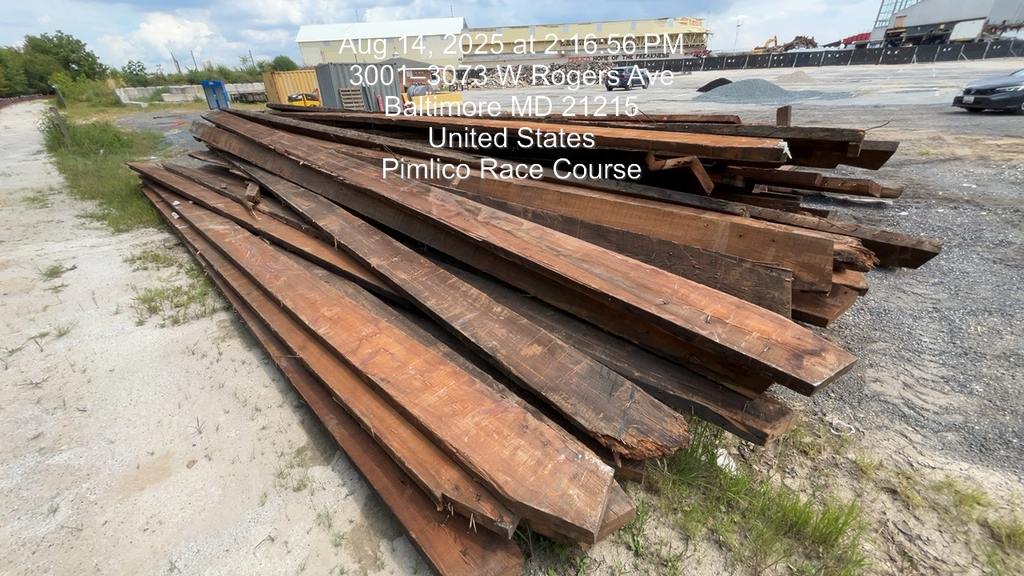
In other news on Pimlico’s demolition, timbers from the old open grandstand built in 1922 were able to be reclaimed and will be used in the new build.
The project is scheduled to be completed in time for the 2027 Preakness. The 2026 Preakness will be held at Laurel Park.


